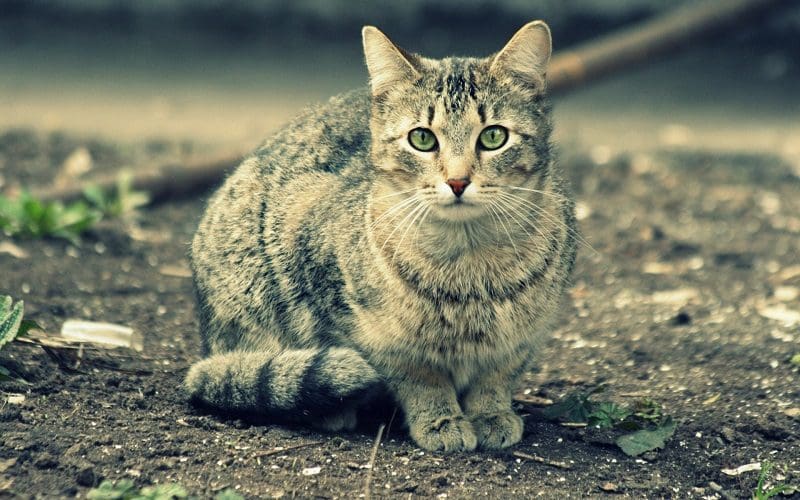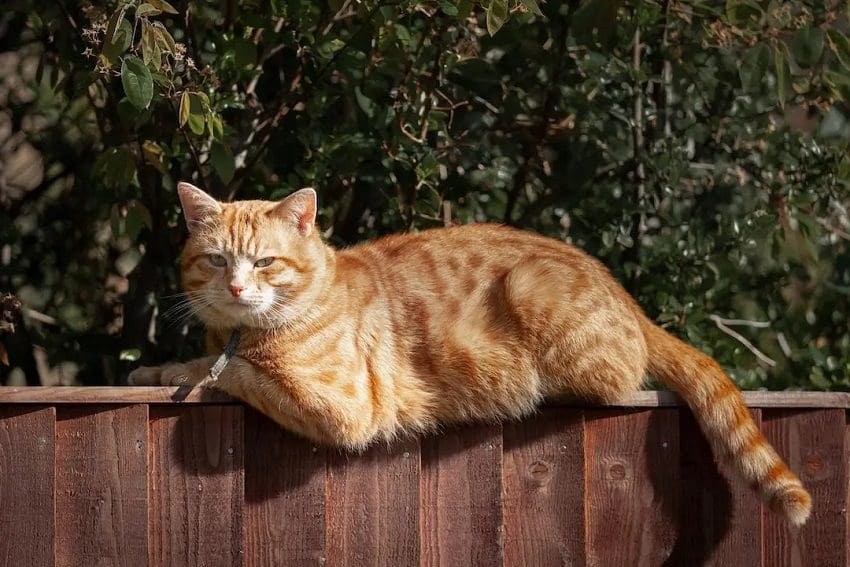Last Updated: 8 months ago
Heat is an important part of the reproductive cycle for cats, but it’s not just female cats that experience it.
Male cats can also go into heat, and understanding this process can help you better care for your tomcat.
So if you’re wondering when do male cats go in heat, read on to find out the answer.
What Is Heat?

Heat is a natural part of the reproductive cycle for male cats. It typically occurs once or twice a year and can last anywhere from one to three weeks.
During this time, your cat may exhibit some unusual behaviors, such as increased vocalization, excessive grooming, spraying urine around his territory, and trying to escape from the house in search of female cats.
It’s important to note that while these behaviors are normal during heat cycles, they can also be signs of other medical issues, so it’s best to have your cat checked out by a vet if you notice any changes in behavior.
During heat cycles, male cats will become more active and restless as they search for females with whom they can mate. They may yowl loudly or cry out at night when their hormones are particularly high.
If you own an intact male cat who is not allowed outside, then it’s especially important that he has plenty of toys and activities available indoors to keep him occupied during this period.
If you’re concerned about unwanted pregnancies, then neutering your cat before he reaches sexual maturity (usually between 6 and 9 months) is highly recommended, as this will prevent him from going into heat.
Additionally, keeping your outdoor cat inside during his heat cycle will help reduce the chances of him mating with stray female cats in the area, which could lead to unwanted litters.
The Male Cat’s Reproductive System

While female cats go into heat and can become pregnant, male cats have their own unique reproductive systems that are just as fascinating.
Male cats have two testicles located in the scrotum, which produce sperm cells.
These sperm cells travel through tubes called vas deferens to the urethra, where they mix with fluids from other glands before being ejaculated out of the penis during mating.
This process is necessary for the successful fertilization of an egg cell from a female cat.
The testicles also produce hormones such as testosterone, which helps regulate sexual behavior in male cats, including marking territory with urine or engaging in aggressive behavior when competing for mates.
Testosterone levels may fluctuate depending on environmental factors such as temperature or stress levels so it’s important to keep your cat comfortable and relaxed if you want them to be able to reproduce successfully.
When Do Male Cats Go In Heat?
Male cats can start going into heat as early as four months old, but they usually begin between six and twelve months of age. When a male cat goes into heat, it typically lasts seven to ten days.
During this time, he will become increasingly vocal with yowling or meowing sounds that are much louder than usual. He may also spray urine around the house to mark his territory—something female cats don’t do when in heat!
Additionally, during this period your cat may groom himself excessively and act restless or agitated due to the hormones coursing through his body.
It’s important to note that neutering your male cat can help eliminate some of these behaviors since the procedure reduces testosterone levels.
Understanding when do male cats go into heat can help you better prepare yourself for any potential behavioral changes in your pet during this period.
Cat Mating Season

The mating season for cats is usually springtime, from March to May. This is when both male and female cats become sexually active.
During this time, male cats will yowl, spray urine, try to escape the house, and become restless in an effort to attract a mate.
Female cats are also more receptive during mating season as they enter estrus or heat cycles which last about 7 days each.
During these periods of heat, she will be ready to accept a tomcat’s advances and may even actively seek out potential mates by calling them with her loud meows.
During mating season, males may fight with other males over access to females in heat as well as mark their territory with urine sprays that contain pheromones meant to attract females in the area.
They may also travel long distances looking for willing partners if there are none available nearby.
After successful copulation between two cats, it usually takes around 9 weeks before kittens are born.
However, some breeds can take up to 12 weeks before giving birth so it’s important not to rush into any decisions regarding spaying or neutering your cat until you know how far along she is in her pregnancy cycle.
How Long Does a Heat Last?
On average, a male cat’s heat lasts between one and two weeks. However, some cats may experience shorter or longer periods depending on their individual biology and environment.
It is important to keep unneutered males away from females during this time as they are likely to try to mate with them if given the opportunity.
To avoid unwanted pregnancies, neutering should be considered as soon as possible after the end of his cycle has passed.
By understanding the male cat’s heat cycle, you can ensure that he receives proper care throughout this period so that he remains healthy and happy.
Resources:
